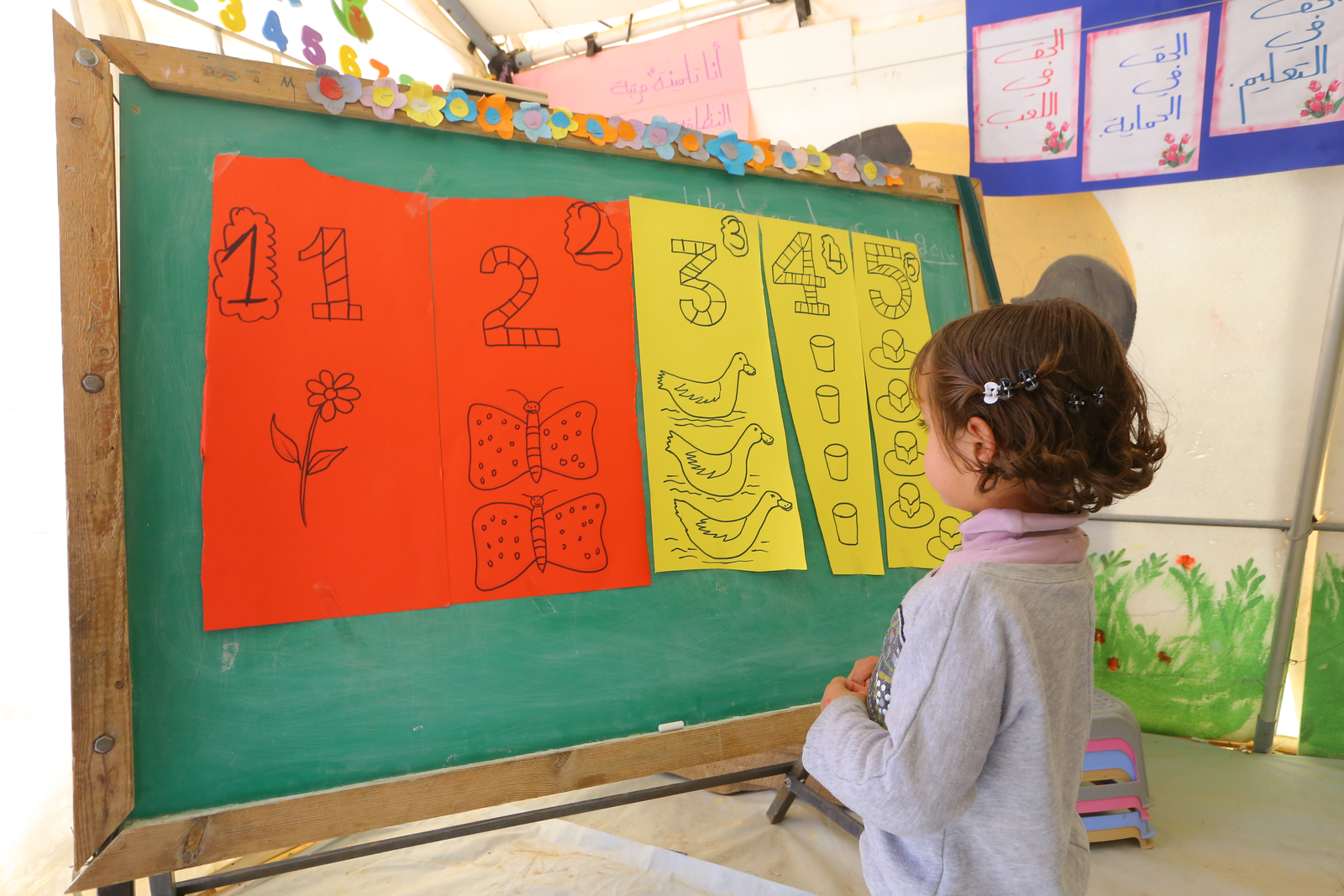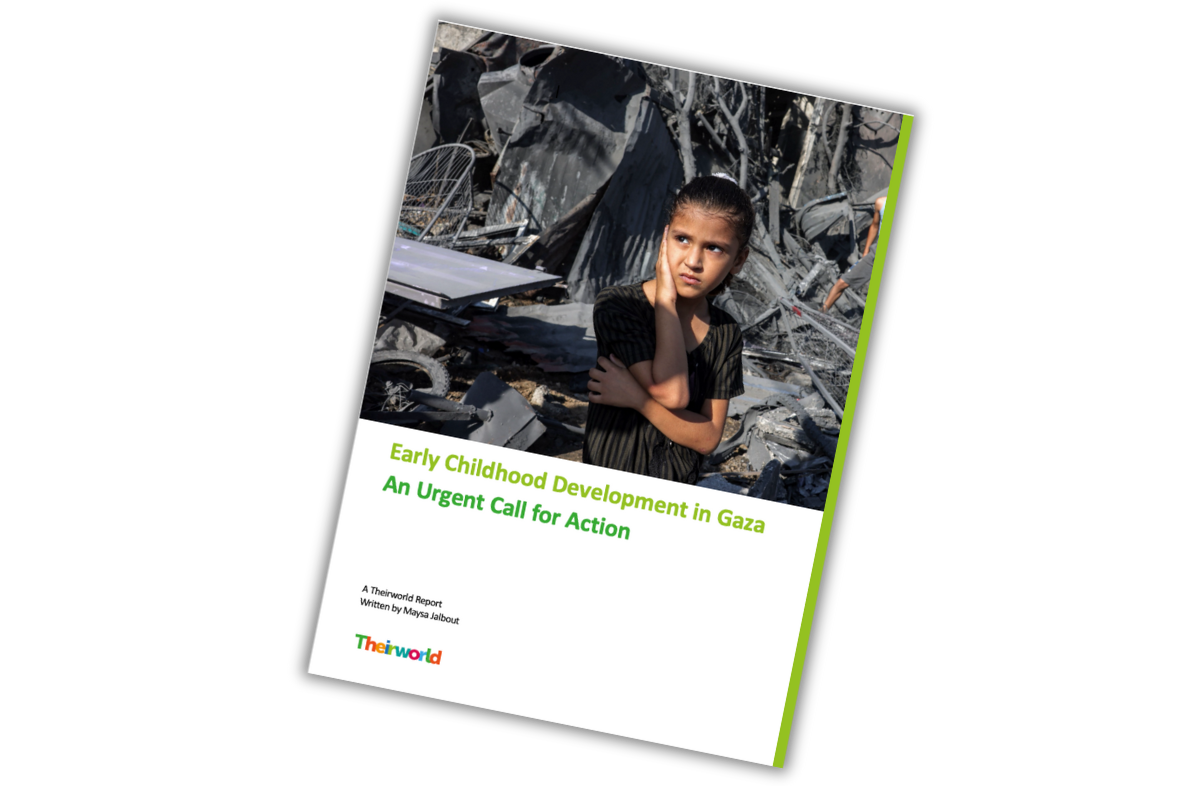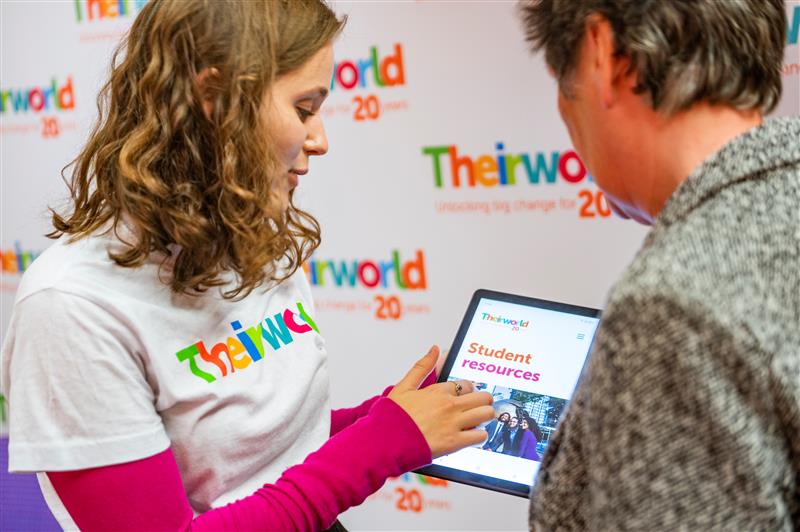
“Peace education camps in Ukraine can ensure children become part of a solution”
Children in conflicts, Education in emergencies, Refugees and internally displaced people, Safe schools, Teachers and learning
Larisa Sotieva of International Alert tells how the organisation helps children affected by the conflict to deal with their trauma and become agents of peace in their communities.
The consequences of today’s ongoing conflicts require both emergency and long-term humanitarian support, from handing out food packages to rebuilding homes, schools and hospitals.
But rebuilding more peaceful societies requires a different approach: working patiently, often behind the scenes, to bring people together, help them develop a shared understanding of conflict and identify ways forward.
Engaging children affected by conflict is an important part of the process. While they are often the first “victims” of war, they can also be powerful agents of peace in their communities.
Creating spaces where they can play and be children again, but also process their feelings about violence, strengthen their natural coping mechanisms and learn basic conflict resolution skills can empower them to resist violence and even become future peace-builders.
That is the idea behind International Alert’s peace education summer camps in Ukraine, where the physical and emotional scars of living through years of conflict and displacement are an everyday reality for one million children, in particular those living near the front line in the east.
Peace education is a technique used to build resilience in children and young adults against the effects of trauma and violence and to develop their skills to resisting engaging in violence themselves. To be most effective, it should be adapted to different ages, contexts and needs.
The programme in Ukraine, launched in the summer of 2016 with funding from the European Union, includes art and animal therapy, non-violent communication lessons and discussions. It also gives children an opportunity to participate in a range of fun indoor and outdoor activities, including sports, cooking and dancing.
The children selected for the camps come from a wide range of social backgrounds, with different degrees of being affected by the conflict, as well as various ways of dealing with it.
For example, as part of the art therapy workshops, one boy drew a treehouse with his family inside. When asked why the house was balancing precariously on a tree branch, the boy confidently assured us – “no”, the house is strong and secure.
We later found out that this boy’s dog had been killed by a landmine.
Another girl complained of various severe illnesses which helped her to feel special and get attention. Her family, it transpired, had been forced to move seven times in the course of one year.
Many children display signs of distress, including aggression or becoming socially withdrawn.
Once the children start to share their feelings and experiences, they can also start to explore more peaceful scenarios.
For instance, unable to cope with the burden and consequences of war, some children start recreating their own “wars” by tormenting their peers. In this way, they bring into their own circle the war in which they cannot participate because of their age.
As in a “grown-up” war, their wars have their own rules, victims and heroes.
But in the camp, through role play and games, children start to see the benefits of using dialogue and patience to resolve their disputes.
By providing them with an outlet to release their frustrations and giving a chance to examine their own actions, they activities help them deal with challenging issues peacefully and reduce their vulnerability to violence in the “real” world.

Another core activity that is encouraged in the Ukrainian peace education programme is helping others. For example, in one camp children visited lonely elderly people living in the vicinity of the camps, offering them support by baking them biscuits, chatting and cleaning up their yard.
Some of these elderly people had been children themselves during World War Two. It is a sad paradox that “lessons learned” from that period are now being shared with a new generation experiencing conflict, bringing them closer and making them feel supported.
In another camp, the children literally saved the lives of some retired police horses that had been sent to the butchers for slaughter. The camp was able to buy the horses and, with the aid of a local volunteer vet, the children nursed them back to health.
With conflict rendering people helpless, such types of activity give children a positive, empowering experience, a feeling that they can “rescue” someone and make a difference.
In any country, war does not merely destroy people, animals and buildings. It also shatters social and family roles and functions. Seeing their fathers’ and mothers’ powerlessness in the face of bombing and shelling, children unconsciously start to take responsibility for the situation on themselves.
Shouldering the burden of war, their psychological capacities become overloaded. Later, when they realise that they too are powerless to do anything about the madness of war, they start to wonder “What is wrong with me?” and conclude that “I am incapable of anything”.
Without timely psychological and socio-pedagogical intervention, such trauma risks embedding the conflict even deeper, for generations to come.
The trauma of armed conflict in countries like Ukraine is dehumanising, in particular for children. They after all, do not choose war. They do not start wars. We adults present them with wars, without even considering how far, or how deep, their consequences are likely to extend.
At the same time, we must shift away from a simplistic view of children merely as victims, which may overlook their potential as dynamic agents of peaceful change.
Once the children start to share their feelings and experiences, they can also start to explore more peaceful scenarios.
In the Ukraine context, many children are subjected to elements of so-called military patriotic education which are more likely to block opportunities for future conflict transformation. Peace education camps can still give children and young people a sense of structure and purpose – but also ensure they can become part of a solution.
With the conflict in eastern Ukraine raging on, delivering humanitarian aid to meet people’s basic needs is crucial. But even having escaped the horrors of war, adults and children alike remain caught up in these conflicts and may influence their course indirectly.
That is why peace-building activities, such as peace education camps, must be a part of our responses to conflicts to change attitudes driving the violence and building potential for its transformation in the future.
Founded in 1986, International Alert works with people directly affected by conflict to build lasting peace. It focuses on solving the root causes of conflict with people from across divides. International Alert works with local communities, partners, businesses and policy-makers in more than 25 countries and territories around the world. From the grassroots to policy level, it brings people together to build everyday peace, from the ground up.

Safe Spaces Brief: Protecting The Most Vulnerable in Emergencies and Disasters (February 2017)
More news

Gaza Ceasefire: UK charity urges action for youngest victims of crisis
